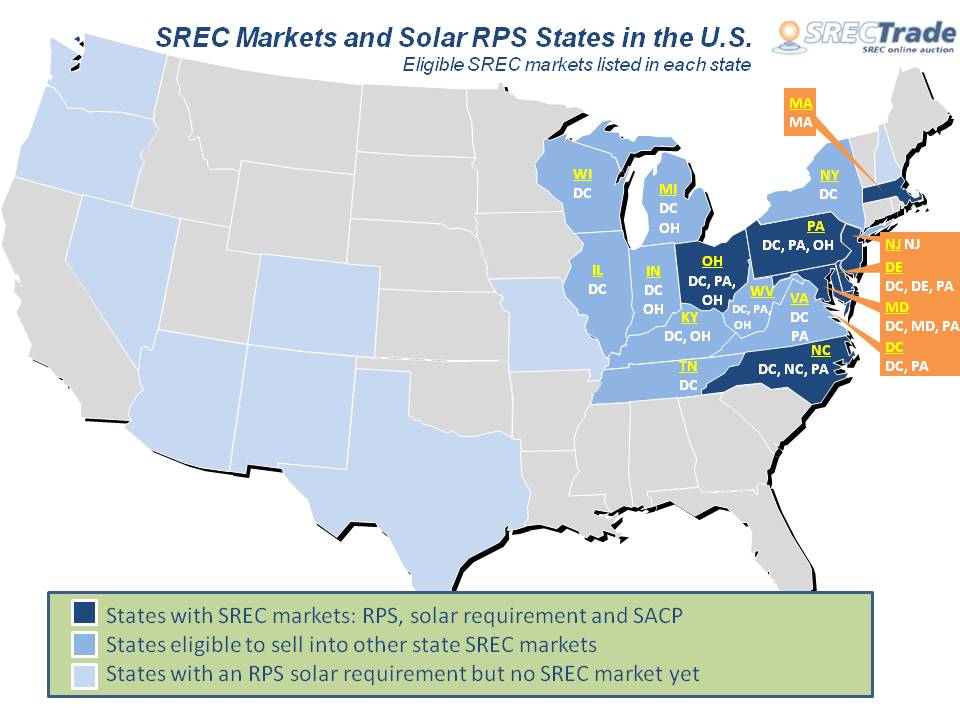The following map shows all the SREC markets in the U.S. along with the states that have a solar requirement as part of the state renewable porfolio standard (RPS). There are three conditions that must be present in order for a state to implement an effective SREC market:
- RPS Solar Carve-Out: The RPS solar requirement distinguishes solar from other renewable energy resources and in most cases will value solar electricity at a higher rate than other renewables. Most states will set a target for solar, either as a percentage of the total electricity sold into the state, as a fixed capacity target in megawatts (MW) or as a solar energy target measured in megawatt hours (MWh) or SRECs produced in a year.
- Unbundled, Tradeable RECs: A state must allow the SRECs to be owned and traded by the generating facility. In some states, your utility company owns your SRECs. This is a common stipulation in state solar grant or rebate programs. Other states have a budget for solar. For example, California is currently not a viable SREC market because the state requires that utilities purchase the SRECs bundled with the electricity that the system produces. The SRECs cannot be unbundled and sold separately.
- Penalty for Non-Compliance: Finally, in order to have a robust SREC market, your state must implement some sort of fine or penalty for non-compliance. This is commonly known as a solar alternative compliance payment (SACP). The SACP is what drives the values of SRECs above any other type of REC. Without the SACP, it is difficult to incentivize buyers to pay prices that promote solar growth.
The states with robust SREC markets have the three criteria of a solar requirement, SREC ownership and the SACP. This map shows all the states that have solar requirements and those that specifically have SREC markets. In addition, we’ve added states that don’t necessarily have their own solar requirements, but are eligible to sell into the SREC markets of other states. The states that they are eligible for are listed in the map under each state.

